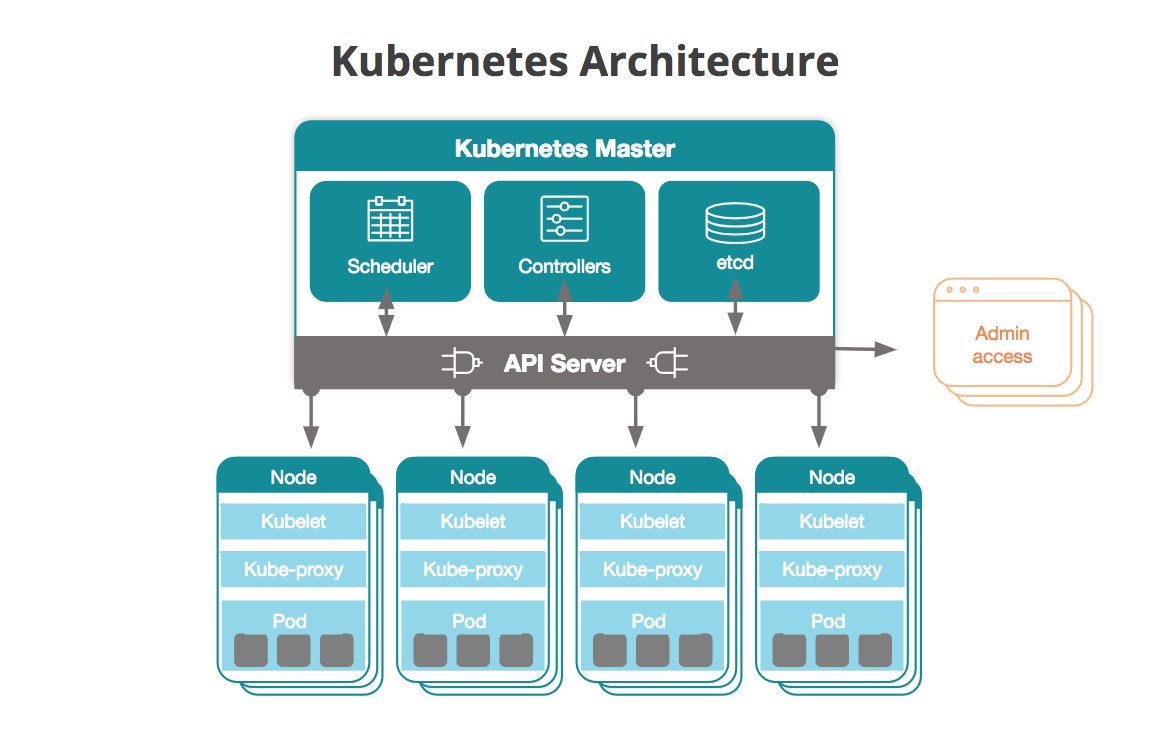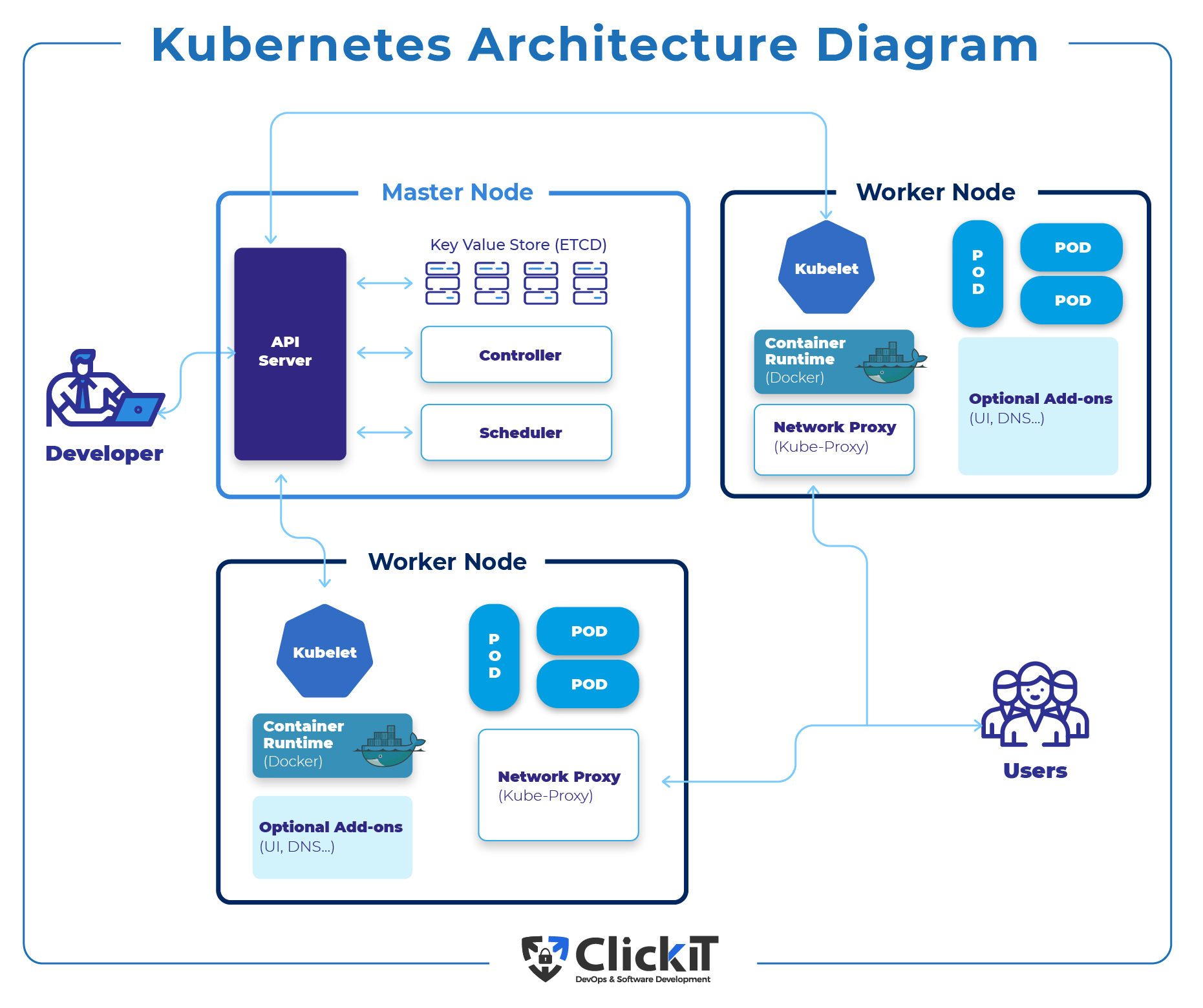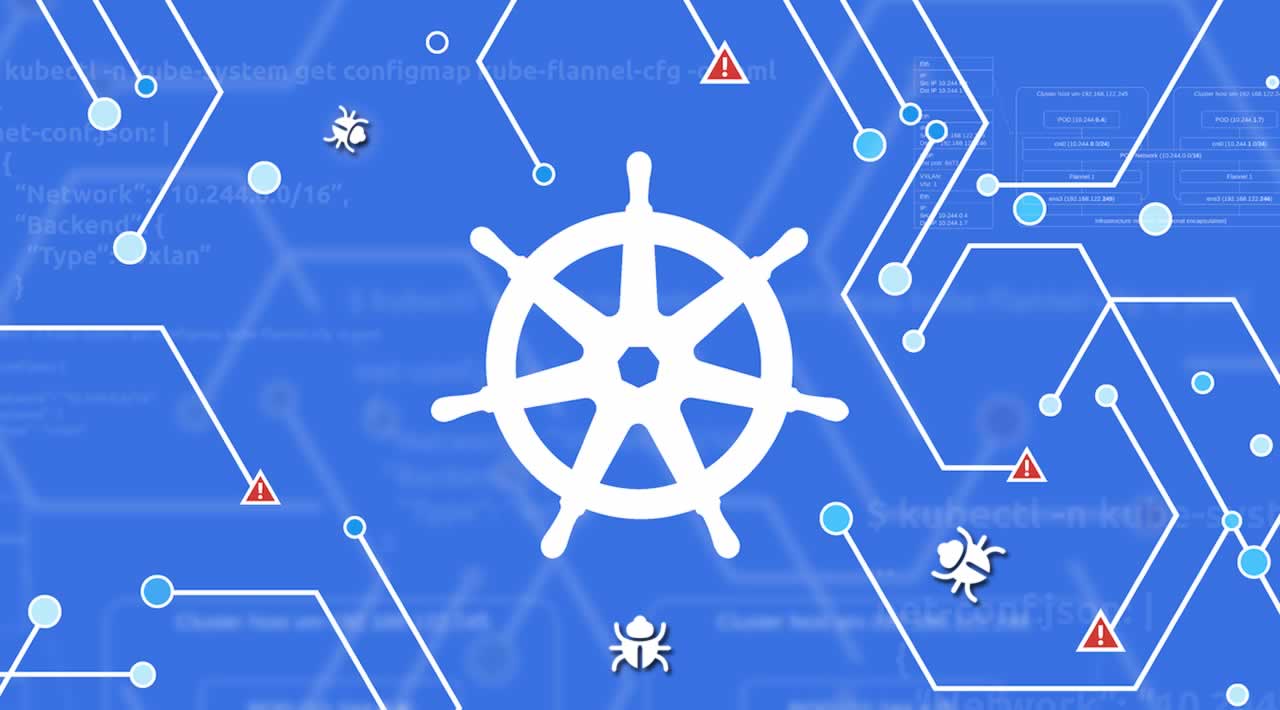What is a Kubernetes Pod Network?
A Kubernetes pod network is a virtual networking layer that enables communication between different pods running in a Kubernetes cluster. It is a critical component of Kubernetes architecture, ensuring seamless connectivity and data transfer between various microservices and applications. The pod network abstracts the underlying physical network infrastructure, allowing developers to focus on building and deploying applications without worrying about the complexities of network configuration.
In a Kubernetes cluster, pods are the smallest deployable units that can be created or destroyed. Each pod is assigned a unique IP address, which can be used to communicate with other pods within the cluster. The pod network is responsible for routing traffic between these pods, ensuring that data is transmitted securely and efficiently. A well-configured pod network is essential for maintaining high availability, scalability, and performance in a Kubernetes environment.
Different Types of Kubernetes Pod Networks
Kubernetes offers a variety of pod network plugins that can be used to create and manage pod networks within a cluster. Each plugin has its unique features, advantages, and limitations. Here are some of the most popular Kubernetes pod network plugins:
Calico
Calico is a popular open-source Kubernetes pod network plugin that provides fine-grained network security and policy management. It supports both IPIP and VXLAN encapsulation modes and offers advanced features such as network segmentation, traffic filtering, and network performance monitoring.
Flannel
Flannel is a simple and lightweight Kubernetes pod network plugin that uses the VXLAN protocol to create an overlay network. It is easy to set up and manage and offers features such as automatic IP address allocation and network policy management.
Weave Net
Weave Net is a Kubernetes pod network plugin that provides a fully-meshed network overlay using the Weave protocol. It offers features such as automatic IP address management, network policy management, and end-to-end encryption. Weave Net is also known for its simplicity, ease of use, and fast deployment.
Romana
Romana is a Kubernetes pod network plugin that provides network automation and policy management. It offers features such as automatic IP address management, network segmentation, and traffic filtering. Romana is also known for its high performance, scalability, and security.
Canal
Canal is a Kubernetes pod network plugin that combines the features of Calico and Flannel. It offers network security and policy management using Calico and automatic IP address allocation and network policy management using Flannel. Canal is a popular choice for Kubernetes clusters that require both security and simplicity.
Choosing the right Kubernetes pod network plugin depends on various factors such as network security requirements, performance, scalability, and ease of use. It is essential to evaluate each plugin’s features, advantages, and limitations before making a decision.
How to Configure a Kubernetes Pod Network
Configuring a Kubernetes pod network involves setting up a network plugin that enables communication between pods in a cluster. Here’s a step-by-step guide on how to set up and configure a Kubernetes pod network using the Flannel network plugin:
Step 1: Install Flannel
To install Flannel, you need to have a Kubernetes cluster up and running. You can install Flannel using the following command:
kubectl apply -f https://raw.githubusercontent.com/coreos/flannel/master/Documentation/kube-flannel.ymlStep 2: Verify Installation
To verify that Flannel has been installed correctly, you can check the status of the Flannel pods using the following command:
kubectl get pods --all-namespaces | grep flannelStep 3: Configure the Pod Network
To configure the pod network, you need to create a network configuration file that specifies the network plugin to use. Here’s an example configuration file for Flannel:
{ "apiVersion": "v1", "kind": "ConfigMap", "metadata": { "name": "kube-flannel-cfg", "namespace": "kube-system" }, "data": { "cni-conf.json": "[{\"name\": \"flannel\", \"cniVersion\": \"0.3.1\", \"plugins\": [{\"type\": \"flannel\", \"delegate\": {\"isDefaultGateway\": true}}]}]", "flannel-cfg.yml": "{\"Network\": \"10.244.0.0/16\", \"Backend\": {\"Type\": \"vxlan\"}}" } }Save the above configuration file as `flannel-config.yaml` and apply it using the following command:
kubectl apply -f flannel-config.yamlStep 4: Restart the Kubernetes Controller Manager
To enable the Flannel network plugin, you need to restart the Kubernetes controller manager. Here’s the command to restart the controller manager:
kubectl delete pod -n kube-system $(kubectl get pods -n kube-system | grep controller-manager | awk '{print $1}')Once the controller manager has restarted, the Flannel network plugin will be enabled, and pods in the cluster will be able to communicate with each other over the Flannel network.
Best Practices for Designing a Kubernetes Pod Network
Designing a robust and scalable Kubernetes pod network requires careful planning and consideration of various factors. Here are some best practices to keep in mind when designing a Kubernetes pod network:
Network Segmentation
Network segmentation is the practice of dividing a network into smaller subnetworks or segments to improve security and performance. In a Kubernetes pod network, you can segment the network by using different network policies for different namespaces or pods. This helps to isolate traffic and reduce the attack surface in case of a security breach.
Security
Security is a critical consideration when designing a Kubernetes pod network. You should use encryption to secure communication between pods and use network policies to restrict traffic between pods and namespaces. You should also use role-based access control (RBAC) to control who can access the Kubernetes API and modify the pod network.
Monitoring
Monitoring is essential to ensure that the Kubernetes pod network is performing optimally and to detect and troubleshoot issues quickly. You should monitor network traffic, latency, and throughput, as well as CPU and memory usage on the nodes and pods. You can use tools such as Prometheus, Grafana, and Elasticsearch to collect and visualize metrics and logs.
Scalability
Scalability is an essential consideration when designing a Kubernetes pod network. You should ensure that the network can handle a large number of pods and nodes without degrading performance. You should use load balancers and service meshes to distribute traffic and ensure high availability. You should also use auto-scaling to add or remove nodes and pods based on demand.
Resilience
Resilience is critical to ensure that the Kubernetes pod network can recover quickly from failures or disruptions. You should use redundant network components and ensure that there are no single points of failure. You should also use network policies to restrict traffic between pods and namespaces and use service meshes to ensure that traffic is routed to healthy pods.
Simplicity
Simplicity is essential when designing a Kubernetes pod network. You should use simple and well-documented network plugins and avoid customizing the network configuration unless necessary. You should also use automation and infrastructure as code (IaC) tools to manage the network configuration and reduce the risk of errors.
Troubleshooting Common Kubernetes Pod Network Issues
Despite proper configuration and best practices, issues can still arise in a Kubernetes pod network. Here are some common issues and troubleshooting steps to help diagnose and resolve network connectivity problems:
Pods Cannot Communicate with Each Other
If pods cannot communicate with each other, check if they are in the same namespace and have the correct labels and selectors. Also, ensure that the pod network is configured correctly and that the network plugin is running. You can use the kubectl get pods command to check the status of the pods and the kubectl get svc command to check the status of the services.
Pods Cannot Access External Services
If pods cannot access external services, check if the nodes have the correct routes and firewall rules. Also, ensure that the pod network is configured correctly and that the network plugin is running. You can use the kubectl get nodes command to check the status of the nodes and the kubectl get pods command to check the status of the pods.
Pods Experience High Latency or Packet Loss
If pods experience high latency or packet loss, check if there are any network bottlenecks or issues with the underlying infrastructure. Also, ensure that the pod network is configured correctly and that the network plugin is running. You can use tools such as Prometheus and Grafana to monitor network performance and identify trends and anomalies.
Pods Cannot Join the Cluster
If pods cannot join the cluster, check if there are any issues with the API server or the etcd database. Also, ensure that the pod network is configured correctly and that the network plugin is running. You can use the kubectl get componentstatuses command to check the status of the cluster components and the kubectl get pods command to check the status of the pods.
Pods Experience Security Breaches
If pods experience security breaches, check if there are any vulnerabilities in the network configuration or the network plugin. Also, ensure that network policies and RBAC are configured correctly to restrict traffic and access. You can use tools such as VulnHub and Offensive Security to test the security of the pod network and identify potential threats.
Kubernetes Pod Network vs. Service Mesh: What’s the Difference?
When it comes to Kubernetes networking, there are two main concepts that often get confused: pod networks and service meshes. While both are important for Kubernetes networking, they serve different purposes and have different benefits and limitations. In this section, we will compare and contrast Kubernetes pod networks and service meshes, and explain when to use one over the other.
What is a Kubernetes Pod Network?
A Kubernetes pod network is a networking solution that enables communication between pods in a Kubernetes cluster. It provides an IP address and network interface to each pod, allowing them to communicate with each other and with external services. A pod network can be implemented using various network plugins, such as Calico, Flannel, and Weave Net, each with its own features, advantages, and limitations.
What is a Service Mesh?
A service mesh is a dedicated infrastructure layer for managing service-to-service communication within a distributed system, such as a microservices architecture. It provides features such as load balancing, service discovery, traffic management, and security, abstracted from the application code. A service mesh can be implemented using various tools, such as Istio, Linkerd, and Consul, each with its own features, advantages, and limitations.
Benefits and Limitations
Both pod networks and service meshes have their own benefits and limitations. A pod network provides a simple and efficient way to enable communication between pods, with low overhead and minimal complexity. However, it lacks advanced networking features such as traffic management, service discovery, and security. A service mesh, on the other hand, provides advanced networking features, with more control and visibility over service-to-service communication. However, it can add complexity and overhead to the system, and may not be necessary for simple use cases.
When to Use One Over the Other
The choice between a pod network and a service mesh depends on the specific use case and requirements. For simple use cases, where communication between pods is the main concern, a pod network may be sufficient. However, for more complex use cases, where advanced networking features are required, a service mesh may be a better choice. It is important to evaluate the specific needs and constraints of the system, and choose the appropriate solution accordingly.
The Future of Kubernetes Pod Networks
Kubernetes pod networks have come a long way since their inception, and they continue to evolve and improve to meet the demands of modern cloud-native applications. In this section, we will discuss emerging trends and technologies in Kubernetes pod networks, and highlight potential areas of improvement and how they may impact the future of Kubernetes networking.
Emerging Trends and Technologies
Some of the emerging trends and technologies in Kubernetes pod networks include:
- Multi-cluster networking: As Kubernetes deployments become more complex and distributed, there is a growing need for multi-cluster networking solutions that can enable communication and coordination between different clusters. Examples of multi-cluster networking solutions include kubefed and kube-router.
- Network service mesh: A network service mesh is a dedicated infrastructure layer for managing service-to-service communication within a distributed system, such as a microservices architecture. It provides features such as load balancing, service discovery, traffic management, and security, abstracted from the application code. Examples of network service mesh solutions include Istio, Linkerd, and Consul.
- Network function virtualization: Network function virtualization (NFV) is a network architecture that virtualizes network functions, such as firewalls, load balancers, and intrusion detection systems, and runs them as software applications on commodity hardware. NFV can be used to provide advanced networking features and services in Kubernetes pod networks.
Potential Areas of Improvement
Some of the potential areas of improvement in Kubernetes pod networks include:
- Simplicity and ease of use: While Kubernetes pod networks provide a lot of flexibility and customization, they can also be complex and difficult to configure and manage. There is a need for simpler and more user-friendly networking solutions that can reduce the learning curve and operational overhead.
- Security: Security is a critical concern in Kubernetes pod networks, and there is a need for more robust and fine-grained security features and controls, such as network segmentation, access control, and encryption.
- Scalability and performance: As Kubernetes deployments grow in size and complexity, there is a need for more scalable and high-performance networking solutions that can handle large numbers of pods and services, and provide low-latency and high-throughput communication.
Impact on Kubernetes Networking
The emerging trends and technologies in Kubernetes pod networks have the potential to significantly impact the future of Kubernetes networking. They can enable new use cases and scenarios, and provide more advanced and sophisticated networking features and services. However, they also introduce new challenges and complexities, and require new skills and expertise to design, deploy, and manage. It is important to stay up-to-date with the latest developments and best practices in Kubernetes networking, and choose the right networking solution for the specific needs and requirements of the application and use case.




